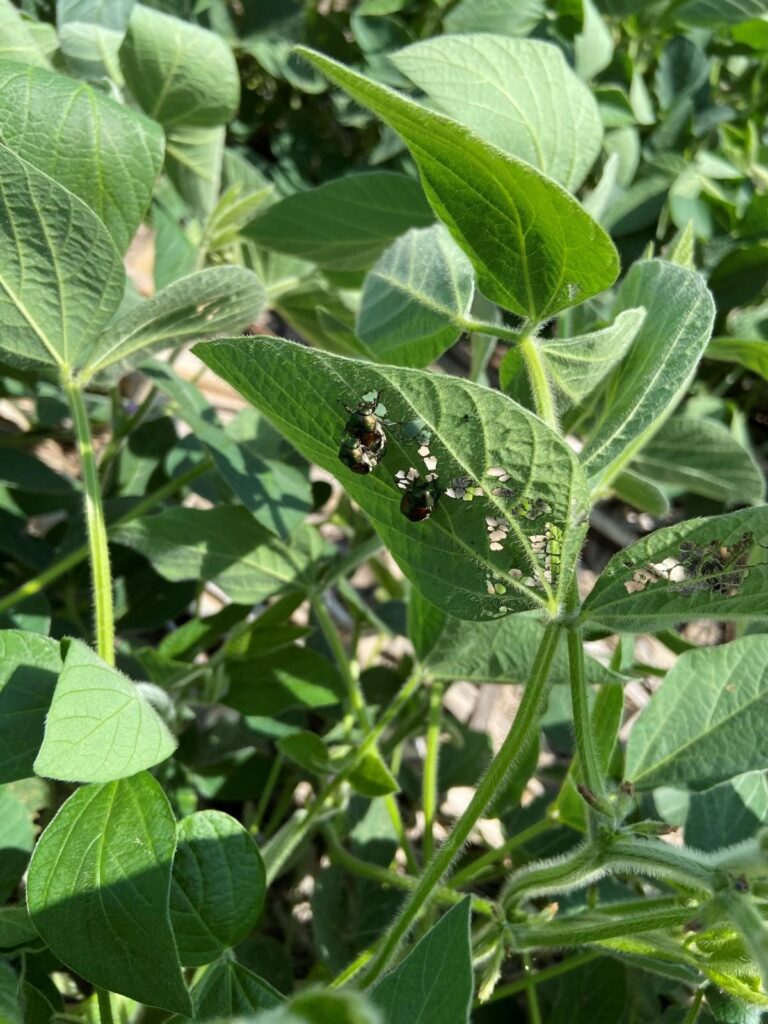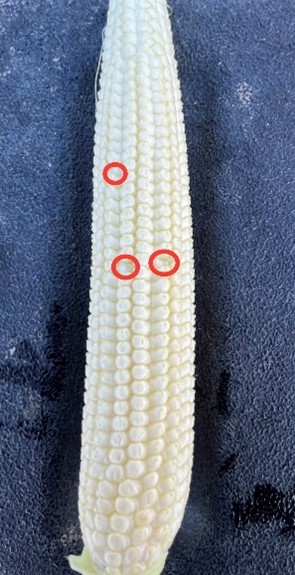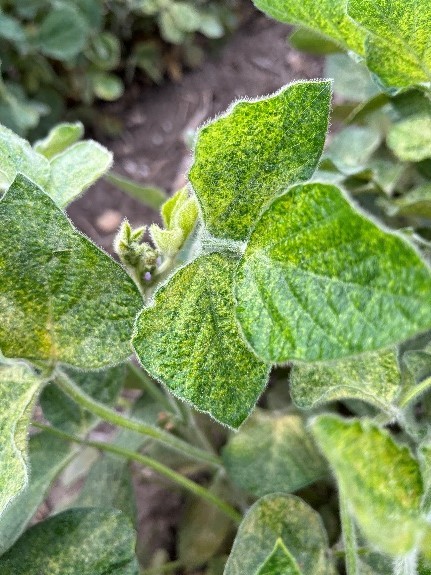
From the Week of July 24, 2023
The one-stop-shop for everything you need to know about what’s happening this week in your fields.
This week’s featured agronomists are:
Jake Heitshusen – Le Sueur
Tyrell Treptow – Goodhue
Justin Schaefer – Wanamingo
Brett Decker – Lewiston
Luke Daninger – Ellsworth
Scroll down to hear from your local agronomist, and click for contact info!
WEST
Belle Plaine – Le Center – Le Sueur

Jake Heitshusen
Here in Le Sueur, it has been DRY DRY DRY! We finally caught some measurable rain this week with a lot of places locally doubling their rainfall to date! We are in the midst of spraying fungicide with a lot of corn done so far, and beans just getting to the prime stage for application. Soybeans I like to say are the more consistent responder, they aren’t variety specific like corn is and they don’t usually get the huge gains like we can sometimes see in the corn, but they are more consistent over the entire farm. Below is some data from our precision department showing the last 7 years of fungicide response. As we can see it responds in both high yield years and lower yield years, in the presence of high disease pressure and low disease pressure it just works. The last three years we have predominantly used a three mode of action fungicide like Trivapro or lately, more Miravis Neo that brings even more consistency yet! Lastly, don’t forget to keep scouting for insects through pod fill and get in touch with your local Ag Partners agronomist to see what issues they might be seeing locally. Enjoy the heat, it will be gone before we know it!

EAST
Pine Island – Cannon Falls – Goodhue – Lake City
See the link for a video report from Tyrell!
CENTRAL
Morristown – Wanamingo – Kenyon

Justin Schaefer
Wow…what a great rain…most of the area around Wanamingo received anywhere from 1 to 3 inches of much needed moisture at crucial times for both corn and beans. Just a few days ago looking at the weather forecast it called for a very hot and dry week (5% chance of rain Tuesday night), causing many of us to question whether we should go forth with our planned investment of fungicide in our crops, or just get what we get at the end of the year. In walking many fields the last few weeks, we still have really good yield potential, and these fungicide treatments will help greatly in protecting that potential.

Currently we are on the tail end of corn fungicide spraying and right in the middle of our bean fungicide and insecticide pass. There is an uptick in both aphid numbers and Japanese beetle damage to bean leaves in comparing this week to last in our area. Please reach out to your local agronomist on what practices look to be the best for you and your fields!
SOUTH
Elgin – Lewiston – Stewartville
 Brett Decker
Brett Decker
As we approach the end of July, we are quickly wrapping up tassel fungicide on corn and applications of fungicide on soybeans. The helicopters have put in some long days of getting it all applied. With the lack of moisture here in southeast Minnesota and most recently the heat, the corn and soybeans have held it together very well. We were very fortunate to receive around an inch of rain across our territory on Wednesday morning. For some this is the first decent rainfall in over two months.
With the heat and moisture stress a lot of concerns were how well pollination would be on corn. After scouting some corn, it looks as though we pollinated very well. There are a few blanks within the ear where some kernels did not get pollinated (see picture below, left) . However, for the most part we are finding a lot of 16-18 kernels around on the ear. With very little moisture this growing season we still have a decent yield potential.
With the heat and lack of moisture, also brings the insects. On continuous corn acres we have been spraying insecticides where the higher population of rootworm beetles have made their appearance. In soybeans we have found infestations of spider mites usually on the edges of fields or waterways. As you can see in the picture, they cause damage by sucking contents out of the leaf cell making the white or yellow spots. In severe infestations the leaves will turn a bronze color and eventually drop off the plant.
 |
 Spidermite infestation |
WISCONSIN
Ellsworth
 Luke Daninger
Luke Daninger
Welcomed rain fell throughout much of the geography once again over the last week. Most farmers were able to avoid hail but there have been areas that unfortunately hit. Hail does open up the plant to disease risk (especially with the moisture we are receiving now), so it is a good move to have a fungicide on the plant to mitigate risk.
On another note, our interns have been busy sticky trapping 24 fields throughout the geography. Overall, there are elevated corn rootworm levels this year over past years. Northern CRW beetles have come on full force as well this week after the Western CRW beetles originally emerged last week. Key notes for future planning include using traits on corn on corn ground and in heavy pressure, add an insecticide to it. CRW counts were cut dramatically where insecticide was used in addition to the traits. These are all management things to consider as we continue our vision to planning for future crop success.





